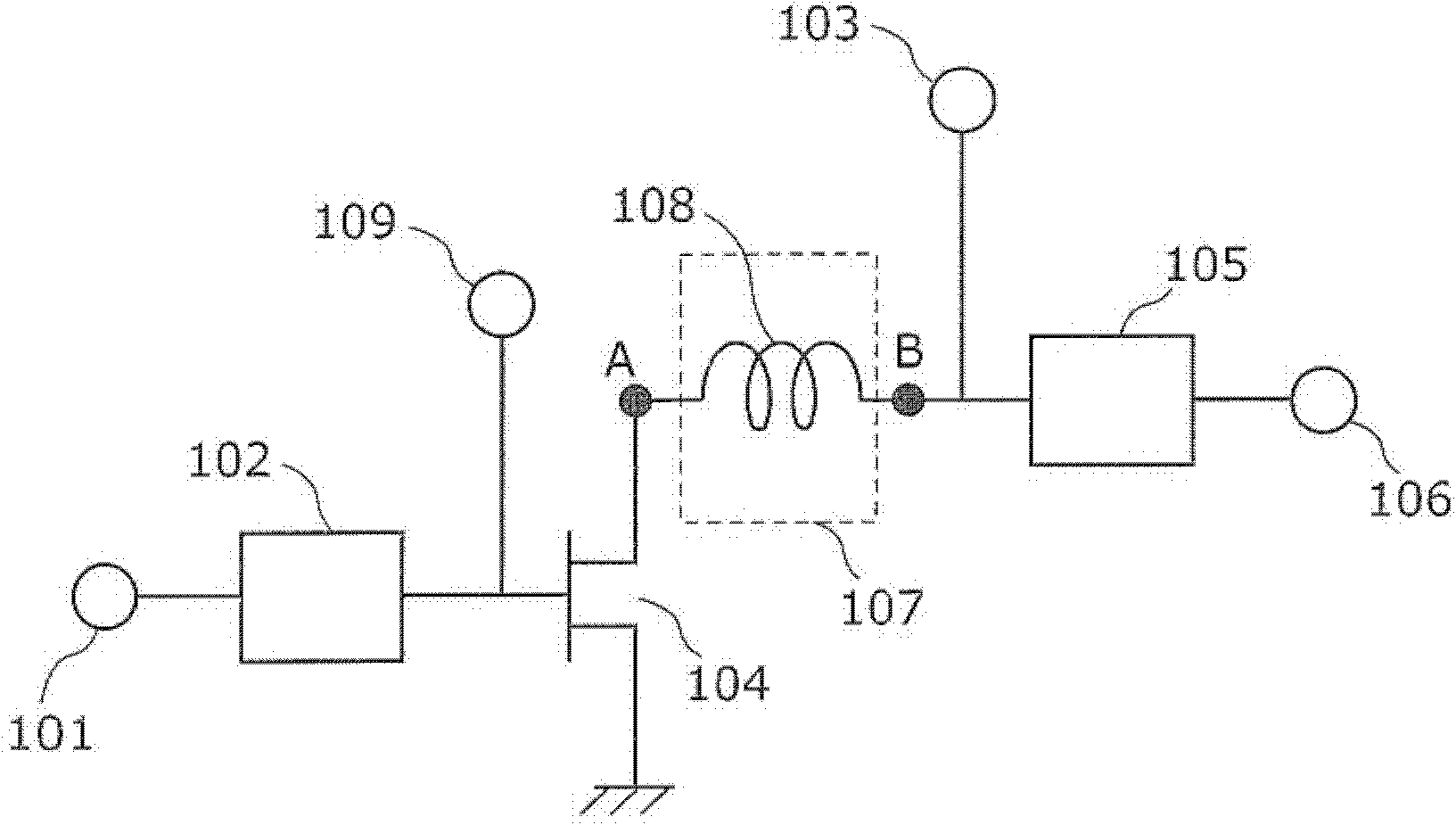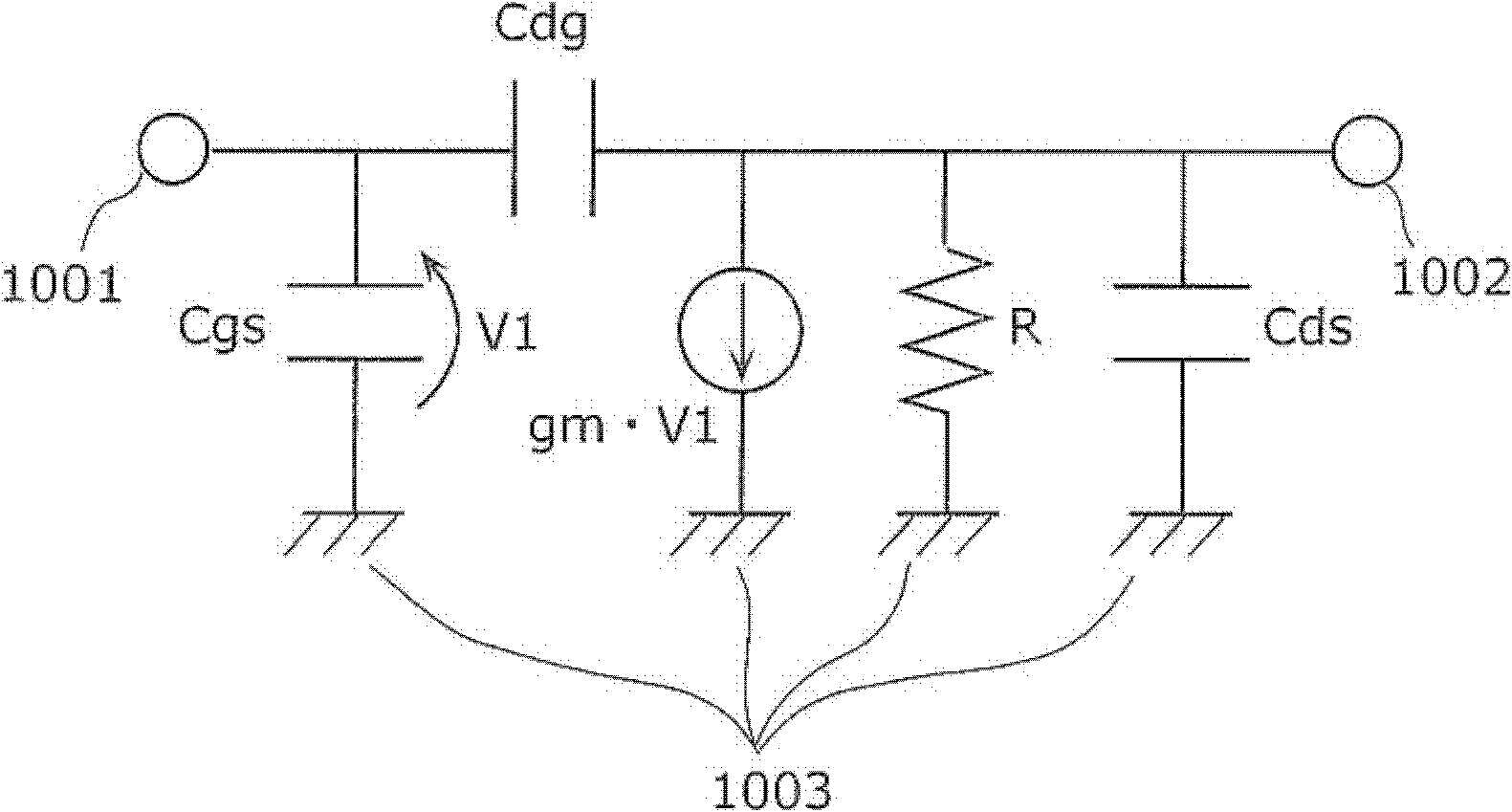High- frequency power amplifier
A power amplifier and frequency technology, applied in the direction of high-frequency amplifiers, power amplifiers, amplifiers, etc., can solve the problems of insufficient power-added efficiency improvement and power-added efficiency reduction, and achieve the effect of reducing distortion and reducing power consumption
- Summary
- Abstract
- Description
- Claims
- Application Information
AI Technical Summary
Problems solved by technology
Method used
Image
Examples
no. 1 approach
[0060] figure 1 A circuit diagram showing a high-frequency power amplifier according to the first embodiment of the present invention.
[0061] Such as figure 1 As shown, the high-frequency power amplifier according to the first embodiment of the present invention has: an input matching circuit 102 ; a transistor 104 which is an amplifying element; a reactance control circuit 107 ; and an output matching circuit 105 . Also, an input terminal 101 for a high-frequency signal is connected to an input side of the input matching circuit 102 , and a bias terminal 109 is connected to an output side of the input matching circuit 102 . A DC voltage for driving the transistor 104 is applied to the gate of the transistor 104 via a bias terminal 109 . In addition, a bias terminal 103 is connected to the input side of the output matching circuit 105 . A DC voltage for driving the transistor 104 is applied to the drain of the transistor 104 via the bias terminal 103 . Furthermore, an ...
no. 2 approach
[0100] Below, use Figure 10 A high-frequency power amplifier according to a second embodiment of the present invention will be described. Figure 10 It is a circuit diagram of a high-frequency power amplifier according to a second embodiment of the present invention.
[0101] The difference between the high-frequency amplifier of the second embodiment of the present invention and the high-frequency amplifier of the first embodiment is the configuration of the reactance control circuit 107 . That is, in this embodiment, the microstrip line 401 is used as the reactance control circuit 107 . In addition, other circuit structures are the same as those of the first embodiment, so that in Figure 10 neutralize figure 1 The same reference numerals are used for the same structural elements, and descriptions thereof are omitted.
[0102] In this embodiment, the reactance component of the microstrip line 401 constituting the reactance control circuit 107 can be adjusted by its lin...
no. 3 approach
[0104] Below, use Figure 11 A high-frequency power amplifier according to a third embodiment of the present invention will be described. Figure 11 It is a circuit diagram of a high-frequency power amplifier according to a third embodiment of the present invention.
[0105] The difference between the high-frequency amplifier of the third embodiment of the present invention and the high-frequency amplifier of the first embodiment is the configuration of the reactance control circuit 107 . That is, in the present embodiment, a series resonance circuit of an inductor 501 and a capacitor 502 is used as the reactance control circuit 107 . In addition, other circuit structures are the same as those of the first embodiment, so that in Figure 11 neutralize figure 1 The same reference numerals are used for the same structural elements, and descriptions thereof are omitted.
[0106] Here, when the resonant frequency is F, the parasitic capacitance of the transistor 104 is C, the ...
PUM
 Login to View More
Login to View More Abstract
Description
Claims
Application Information
 Login to View More
Login to View More - R&D
- Intellectual Property
- Life Sciences
- Materials
- Tech Scout
- Unparalleled Data Quality
- Higher Quality Content
- 60% Fewer Hallucinations
Browse by: Latest US Patents, China's latest patents, Technical Efficacy Thesaurus, Application Domain, Technology Topic, Popular Technical Reports.
© 2025 PatSnap. All rights reserved.Legal|Privacy policy|Modern Slavery Act Transparency Statement|Sitemap|About US| Contact US: help@patsnap.com



